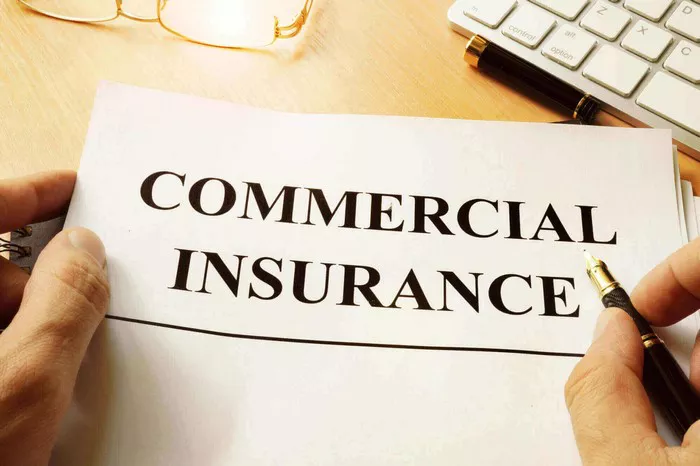When it comes to protecting your business, understanding the different types of insurance you need is crucial. Two of the most common types of business insurance are general liability insurance and errors and omissions (E&O) insurance. But what exactly are they, and how do they differ from each other? This article breaks down these two essential policies, answering key questions to help you make an informed decision for your business.
What Is General Liability Insurance?
General liability insurance, often called GL insurance, is designed to protect businesses from financial loss due to common accidents or injuries. It covers a wide range of incidents that can occur during normal business operations.
For example, if a customer slips and falls in your store or if your business property causes damage to a client’s property, general liability insurance can help cover medical costs, legal fees, and damages.
In simple terms, general liability insurance is a broad safety net. It’s designed to address issues like:
Bodily injury: If a customer or visitor gets injured on your business premises.
Property damage: If your business causes damage to someone else’s property.
Personal injury: If you’re accused of defamation, libel, or slander.
Advertising injury: If your advertisements lead to legal claims such as copyright infringement.
General liability insurance is generally considered essential for businesses of all sizes. Whether you’re a small local shop or a large corporation, this policy is a fundamental aspect of risk management.
What Is Errors and Omissions Insurance?
On the other hand, errors and omissions insurance, or E&O insurance, is a more specific type of coverage aimed at businesses that provide professional services. It protects businesses from claims that they made mistakes or missed important details while performing their professional services. These mistakes could lead to financial losses for clients.
For example, if a consultant provides advice that causes a client to lose money or if an accountant makes an error in their calculations that leads to tax problems, E&O insurance can help cover the costs of defending against such claims and compensating the client.
E&O insurance typically covers:
Professional mistakes: Such as providing incorrect advice, overlooking important details, or making an error in your work.
Negligence: If clients believe you failed to meet a standard of care or professionalism.
Failure to deliver services: If you don’t meet a service agreement or deliverables.
While general liability insurance is aimed at covering physical injuries and property damage, errors and omissions insurance is designed to handle issues related to your professional work and service delivery.
General Liability VS E&O Insurance: What’s the Difference?
The main difference between these two types of insurance policies lies in the nature of the risks they cover. While both protect your business from lawsuits and financial losses, they do so in very different ways. Let’s break down the key differences:
1. Scope of Coverage
General liability insurance has a broad focus. It covers:
Physical injuries
Property damage
Personal injuries (e.g., slander or defamation)
In contrast, E&O insurance focuses specifically on mistakes or failures related to professional services. It covers:
Errors or omissions in the work you do for clients
Negligence or failure to deliver services as promised
2. Type of Claims
General liability insurance is often triggered by physical accidents, like a customer tripping over a rug or your company’s products causing harm to someone. These claims are usually related to accidents or unintended damages.
E&O insurance, however, is about professional negligence or errors in judgment. Claims made under E&O insurance typically involve:
A mistake made in professional services.
A failure to meet a client’s expectations or standards.
A missed deadline or service breach.
3. Who Needs It?
General liability insurance is a must-have for almost every business, whether you’re a contractor, retailer, or manufacturer. It helps cover any unexpected accidents or injuries that could happen on your premises.
On the other hand, errors and omissions insurance is typically more relevant for businesses that provide professional services, such as:
Lawyers
Consultants
Accountants
Financial advisors
Architects
Engineers
Real estate agents
If your business involves giving advice, offering expert services, or managing others’ interests, you may need E&O insurance.
4. Cost Difference
The cost of both general liability insurance and errors and omissions insurance can vary widely based on several factors, such as:
The size of your business
The industry you’re in
The risks associated with your operations
The level of coverage you need
Typically, general liability insurance is less expensive than E&O insurance because it covers a broader range of risks. However, the costs of E&O insurance can be more significant, especially for businesses offering specialized services where the risks of making an error are higher.
5. Coverage for Legal Fees
Both types of insurance cover legal fees, but the specific nature of those fees differs. With general liability insurance, legal costs are often related to defending against claims of physical injury or property damage. For E&O insurance, legal fees are usually associated with defending your professional reputation or errors in service delivery.
6. Limits of Coverage
The coverage limits for general liability and E&O insurance may also differ. For example, general liability might cover your business up to a certain amount for bodily injury or property damage claims. E&O insurance often has more specific limits tied to the nature of the professional services being rendered, sometimes with a focus on individual claims rather than broad coverage.
Can You Have Both Insurance Types?
In many cases, businesses opt to have both general liability and errors and omissions insurance. For example, a company that provides consulting services might need E&O insurance for the professional mistakes they could make in their work. At the same time, they would still need general liability insurance to protect against accidents that could happen on their property or when interacting with clients.
Having both types of insurance ensures that a business is fully protected. General liability insurance can help cover non-professional issues, like bodily injury, while E&O insurance safeguards against professional errors.
Which One Do You Need for Your Business?
When deciding between general liability and errors and omissions insurance, the choice comes down to the type of work you do and the specific risks your business faces.
If your business involves providing professional services or advice, such as in legal, consulting, or financial services, then E&O insurance is likely necessary.
If you run a business that is more physical in nature, such as retail, manufacturing, or construction, general liability insurance should be a priority.
In many cases, businesses benefit from having both types of coverage. That way, you can protect yourself from a wide variety of risks, whether they are physical accidents or professional mistakes.
How to Choose the Right Coverage for Your Business
Choosing between general liability and E&O insurance requires careful consideration of the unique risks your business faces. You’ll want to:
Assess your risk exposure: What kind of activities does your business engage in? What are the chances of physical accidents versus errors in your work?
Consider the industry requirements: Some industries require specific types of insurance, such as E&O insurance for financial advisors or contractors.
Consult an insurance professional: An insurance broker can help guide you through the decision-making process and recommend policies tailored to your business’s needs.
Conclusion
Understanding the difference between general liability insurance and errors and omissions insurance is essential for making sure your business is properly protected. While both policies can cover lawsuits and financial claims, they target different risks. General liability insurance focuses on physical injuries and property damage, while E&O insurance focuses on mistakes or negligence in the services you provide.
By evaluating your business’s specific needs and risks, you can make an informed decision about which insurance policies will offer the best protection. Whether you choose one or both, the right coverage can give you peace of mind and help you focus on what you do best—running your business.
Related Topics:
Employers Liability Insurance VS Professional Indemnity Insurance: Are They the Same?


















